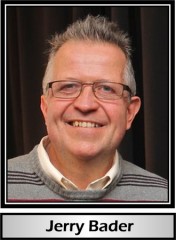Podcast: Play in new window | Download (Duration: 27:50 — 19.4MB)
C. diff is a nasty and tenacious intestinal infection

C. diff (Clostridium difficile) is a bacterium that causes inflammation of the colon, known as colitis. This is a problem that is on the rise. C. diff is a bacteria seeking an opportunity. It often occurs after someone has been treated with antibiotics for other issues. In this interview, you will learn how Jerry acquired C. diff after antibiotic treatment for diverticulitis. Another friend of mine acquired it after antibiotic use for sinusitis. These are people who had been prescribed antibiotics numerous times for these conditions and these treatments finally led to C. diff infection. This is a cautionary tale.
People who have other illnesses or conditions requiring prolonged use of antibiotics, and the elderly, are at greater risk of acquiring this disease. The bacteria are found in the feces. People can become infected if they touch items or surfaces that are contaminated with feces and then touch their mouth or mucous membranes. Healthcare workers can spread the bacteria to patients or contaminate surfaces through hand contact. C. diff is often contracted in health care facilities like hospitals and nursing homes.
Clostridium difficile sickens over 500,000 and kills over 14,000 Americans every year, while racking up some $4.8 billion in annual health care costs.
Symptoms of C. diff include:
- Watery diarrhea (at least three bowel movements per day for two or more days)
- Fever
- Loss of appetite
- Nausea
- Abdominal pain/tenderness

Transmission of C. diff
C. diff is shed in feces. Any surface, device, or material (e.g., toilets, bathing tubs, and electronic rectal thermometers) that becomes contaminated with feces may serve as a reservoir for the C. diff spores. C. diff spores are transferred to patients mainly via the hands of healthcare personnel who have touched a contaminated surface or item. C. diff can live for long periods on surfaces.
Treatment of C. diff Infection
Treatment of primary infection caused by C. diff is an antibiotic such as metronidazole, vancomycin, or fidaxomicin. One problem with antibiotics used to treat primary C. diff infection is that the infection returns in about 20 percent of patients. In a small number of these patients, the infection returns over and over and can be quite debilitating. To learn more visit MedicalNewsToday.com.
Transplanting stool from a healthy person to the colon of a patient with repeat C. diff infections has been shown to successfully treat C. diff. These “fecal transplants” appear to be the most effective method for helping patients with repeat C. diff infections. This procedure may not be widely available. (do you think they ever considered implanting healthy bacteria? hmmm)
So here we have a problem that is cause by a nasty bacteria and antibiotic use. What I find so interesting about the medical approach is that the use of probiotics is rarely considered or even casually dismissed. The concept of taking probiotics prior to, during and after treatment is usually never brought up to the patient.
If Jerry had been taking probiotics or addressing his diverticulitis earlier in his life, he may have avoided or mitigated this whole issue. We will never know. If my other friend had treated his sinusitis naturally he might be better off. They are both examples of the average person who rarely questions the effectiveness, safety and risks of medical treatment until they have additional problems. The best course of action is to be a proactive consumer and maintain a healthier lifestyle. Next is to become informed about health issue you have and take steps to become healthier. If you need medical intervention study the treatments proposed and be proactive about reducing your risks of the treatment. In the case of antibiotic use take a therapeutic probiotic at the very least. Learn from the experience of others.
About Jerry Bader
Jerry is the National Director news/talk programming at Midwest Communications. He is the host of the Jerry Bader Show heard mornings in northeast Wisconsin.











{ 0 comments… add one now }